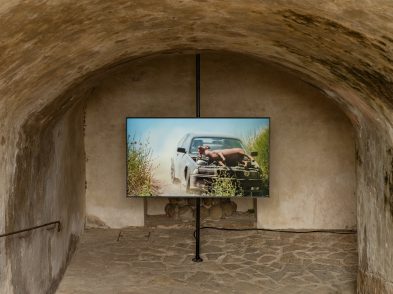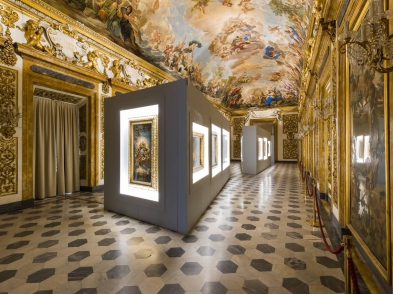The Venice
Bienniale, which opens the first week of June, is modern visual art’s most
famous and, arguably, its grandest international festival. It attracts the cream
of the global art world, with high-rolling collectors mooring glamorous yachts
in view of piazza San Marco.
The Biennale is
also popular with a paying public. Curious about the latest trends as well as
new commissions by art’s established celebrities, more than 375,000 people
visited the last Biennale, in 2009. That record could be broken before the
current edition, the 54th, closes on November 27.
This year,
artists, whose ages range from late-20s to almost 80, from 89 countries will
exhibit across the city. Andorra, Saudi Arabia, Bangladesh and Haiti are
represented for the first time, and it is often small countries that provide
the biggest discoveries. A few old-timers are back after years or even decades
of absence, for example Cuba, Iraq and Zimbabwe. Also, several autonomous
regions also mount exhibitions; Scotland will be presenting the excellent young
sculptor, Karla Black, whose abstract formations using familiar materials have
garnered a formidable following.
The entire
event, however, revolves around the 30 national pavilions located in the
Giardini, the Napoleonic-era park where the first Biennale opened in 1895. The
pavilions are permanent buildings and each presents a special exhibition by
progressive figures in each country’s contemporary art scene nominated by local
art agencies.
Four years ago,
for example, Great Britain picked Tracey Emin as its cultural representative.
The task this year has fallen to the lesser well-known Mike Nelson who is
nonetheless highly regarded by fellow artists at home and abroad.
Nelson makes
labyrinthine installations using materials and discarded furnishings found in
builders’ yards. With their warren of corridors and claustrophobic rooms,
artificial light and hidden exits and entrances, his constructions fill the
imagination with possible stories to explain the sequence of uninhabited spaces
through which the viewer is free to wander. At the end of the exhibition, this
mysterious world is dismantled and packed away.
At the Italian
pavilion, controversy has stalked the choice of exhibition. This year’s was
always going to be significant because of the country’s national anniversary.
When the Ministry of Culture announced the appointment of Vittorio Sgarbi as
curator, many jaws dropped in disbelief.
‘Contemporary
art is to Sgarbi what America was to Osama Bin Laden,’ commented one prominent
Italian critic. Sgarbi’s sceptical view of modern developments is immediately
recognizable in his writings. His popular television programmes are associated
with praising the achievements of the Renaissance and Baroque masters.
Briefly a
minister in Berlusconi’s government, Sgarbi is also respected as an academic,
so other art professionals greeted his involvement as imaginative. By choosing
200 Italian artists selected by 200 collectors, Sgarbi is offering an image of
today’s art seldom seen in the top museums. The result confronts the Biennale’s
reputation for championing the cutting edge. Traditional styles and media are
set alongside the acknowledged avant-garde, and familiar names jostle with the
critically overlooked. It may be this festival’s popular success.
Elsewhere, at
the heart of the Giardini, the inclusion in the major thematic exhibition of a
painter who died over 400 years ago also raised eyebrows. Hanging in ILLUMinations,
which examines how encounters with art sharpen our perception of life outside
the museum, are three outstanding masterpieces by the Venetian painter
Tintoretto. All the other exhibited artists were born in the twentieth century. The decision to set their work beside
the late Renaissance brilliance of The
Stealing of the Dead Body of St. Mark underlines the revolutionary nature of Tintoretto’s grasp of illusion
and symbolic imagery. Seen in relation to today’s groundbreakers, no strangers
themselves to metaphor and spectacle, the time between somehow seems less
immense.
Pundits
inevitably search for winners. Prizes, after all, are at stake and a successful
critical reception boosts a reputation, bringing offers from prestigious venues
and curators. The US pavilion hosts one contender, the artistic duo Jennifer
Allora and Guillermo Calzadilla. They have worked together since 1995 after
first meeting in Florence.
Using a unique
mix of sculpture, performance, sound and video, their work teases out common
threads in contradictory ideas, materials, cultures and actions. The results
are often absurd juxtapositions, as in creating music with a trumpet strapped
to a speeding motorbike. New work specifically for the Biennale will surprise
visitors by appearing simultaneously out of place and remarkably sensible.
The truth is
that, regardless of the lure of fashion, art’s next breakthrough is hard to
foretell. The clue may lie in those small pavilions.
Martin Holman is a British writer on contemporary art and an
exhibition organiser. He recently organised the first loan exhibition in London
dedicated to Italian Arte Povera artist, Pino Pascali (1935-68). He currently
lives in Florence.
54th
VENICE BIENNALE International Art Exhibition
June 4 to November 27, Venice (Giardini and Arsenale)






